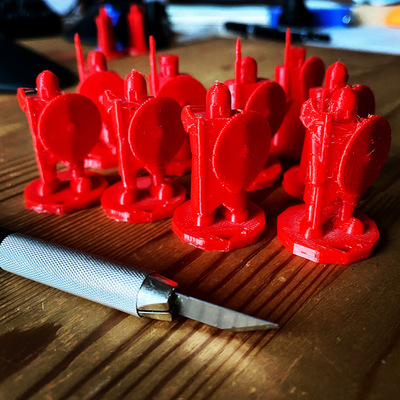
|
Feeding and Watering of Horses |
| 2022-07-19 |
Feeding and Watering of Horses

My reading of The Medieval Warhorse goes on. I reached the part about the crusades, the meeting of two horse cultures, and the rules of the Templars and the Hospitallers.
To drink water — for both man and horse — required permission. However, if the march was through peaceful countryside it was permissible to take advantage of a running stream so long as the column was not disrupted. On a reconnoitring missing watering was possible only if the standard-bearer called a water halt. If the alarm was raised close by, those nearest could arm and mount and wait for the Marshal's order.
The book winds towards an example:
en route the warhorses were led by the squires, and the knights rode mules or palfreys. In the Rule of the Hospitallers it was decreed that except for helmet and leg armour all other armour was to be carried at the cantle when out on a raid.
The not watering rule was very sensible. An apposite modern example concerns Noel Carney, whose son John related the incident to me. In the 1920s as a member fo the Middlesex Yeomanry he was stationed in Palestine to keep Zionists and Palestinians from their interminable warfare. On a patrol with full arms strapped behind their saddles, the column dismounted at a desert rill.
Shots rang out. The whole troop of horses bolted, and for weeks after Arabs proudly paraded captured British chargers and firearms. A very successful razzia; the lieutenant in charge was later court-martialled.
The telling goes back to the Middle ages:
At all times Templars had to be prepared and observe cautionary measures. When waiting in ambush, guarding foragers, or on watch, they were to keep their horses saddled and bridled, and not to feed them unless authorized. Other than feeding making a horse unready for action, a horse with a full stomach can colic if asked for strenuous exertion, the pain causing him to seize up.
My takes for these three extracts is that watering is done on order. Probably watering all the horses at once should be avoided. Security has to be established at first, then watering happens in turns. The selection of the watering point is important.
For lower level parties, a welcome upgrade is probably the mule or the pack horse. One can be loaded up to 240 pounds (108 kilograms). What if, bolting from an ambush, 240 pounds of precious kit or loot vanish at a gallop in the country side?
How about acknowledging the value of horses and mules by having an opposition who focuses on stealing them (and not on blindly attacking the party)?
Equine and logistics puzzling fun ahead.
